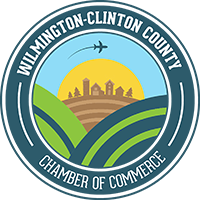OSHA’s National Emphasis Program Fall Protection
On May 1, 2023, the Occupational Safety and Health Administration (OSHA) announced it began a National Emphasis Program (NEP) designed to prevent falls (https://www.osha.gov/news/newsreleases/national/05012023). Falls are among the most common causes of serious work-related injuries and deaths. According to OSHA and the Bureau of
Labor Statistics (BLS), since 2014 there have been a total of 12,049 fatal workplace injuries due to falls. Of those 12,049 fatalities, 5,369 were” Fatal falls to lower levels” and 6,680 were due to “Slips, trips and falls.” These injuries and fatalities are preventable, so a National Emphasis Program is necessary to ensure these hazards are being addressed. In fact, year after year, both Fall Protection – General Requirements (29 CFR 1926.501) and Fall Protection – Training Requirements (29 CFR 1926.503) are among OSHA’s Top 10 Violations.
This NEP will establish guidelines for OSHA compliance and safety officers to initiate inspections under the scope of the NEP whenever they observe someone working at heights. This may occur during an inspector’s normal work day travel while enroute to, from or during other OSHA inspections. As with all NEP’s, OSHA will have a 90-day outreach program for industry to focus on educating employers about effective ways to keep employees safe. Although this NEP is geared towards the construction industry, general industry and agriculture will be targeted as well.
Employers, according to OSHA, are required to keep a safe workplace for their employees by:
1) Providing working conditions that are that are free of known hazards,
2) Ensuring work areas and floors are clean and dry, as far as possible,
3) Selecting and providing required personal protective equipment at no cost to workers, and
4) Training workers about hazards in languages they understand.
In addition, employers should follow the guidelines below to prevent falls and help minimize inspections.
1) Ensure every floor hole into which a worker can accidentally walk is properly guarded. Using a railing and a toe board or a floor hole cover are acceptable means.
2) If there are open sided platforms, floors or runways, provide a guard rail and toe-board around them.
3) Regardless of height, if a worker can fall into or onto dangerous machines or equipment (such as a vat of acid or a conveyor belt) employers must provide guardrails and toe-boards to prevent workers from falling and getting injured.
4) Evaluate all other jobs that require fall protection that include safety harness and line, safety nets, stair railing and handrails.
As you can see, OSHA is taking injuries and fatalities due to falls, very seriously. They will be increasing inspections and enforcement at any time they see employees working at heights. Employers can minimize the impact of these inspections and enforcement activities and protect employees by following fall protection regulations for construction, general industry, and agriculture.
For more information on the National Emphasis Program on Fall Protection, go to the following link https://www.osha.gov/fall-protection or to view other National Emphasis Programs implemented by OSHA, go to https://www.osha.gov/enforcement/directives/nep. You may also contact Sedgwick’s Andy Sawan at 330.819.4728 or andrew.sawan@sedgwick.com
